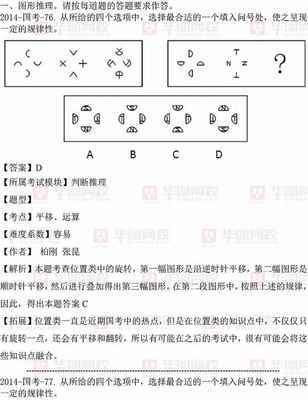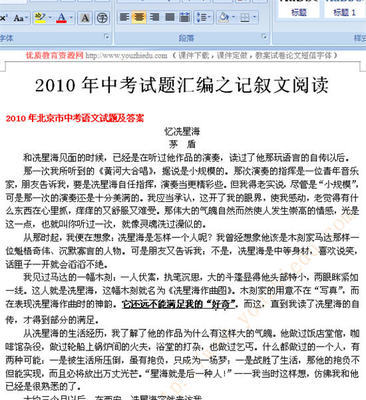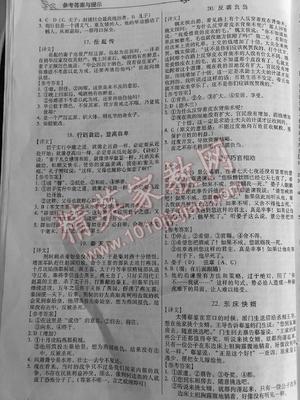The Modern Language Aptitude Test (MLAT)measures an individual’s aptitude for learning a foreign language.First published in 1959, the test can be used to predict success inlearning all basic communication skills, but particularly speakingand listening. The Modern Language Aptitude Test is now theproperty of the non-profit entity Second Language TestingFoundation, Inc., who has acquired the rights to the test in orderto ensure its continued availability to the second language testingcommunity.
PART I: NUMBER LEARNING
Part I of the MLAT has 43 possible points. This part of the MLATtests auditory and memory abilities associated with sound-meaningrelationships. In this part of the MLAT, you will learn the namesof numbers in a new language. Subsequently, you will hear the namesof numbers spoken aloud, and you will be asked to write down thesenumbers. For example, if you heard someone say the number“seventeen” in English, you would write down 1 7. But in this test,you will hear the numbers in a new language. Here’s how it willwork:
You will hear some instructions read aloud. The speaker will thenteach you some numbers (not the same as these samples, of course).The speaker will say something like:
[Thegreen text represents the voice you willhear.]
Now I will teach you some numbers in the newlanguage. First, we will learn some single-digit numbers:
“ba” is “one”
“baba” is “two”
“dee” is “three”
Now I will say the name of the number in the new language, and youwrite down the number you hear. Try to do so before I tell you theanswer:
“ba” -- That was “one”
“dee” -– That was “three”
“baba” -– That was “two”
Now we will learn some two-digit numbers:
“tu” is “twenty”
“ti” is “thirty”
“tu-ba” is “twenty-one” in this language -- because “tu” is twentyand “ba” is one.
“ti-ba” is “thirty-one “ – because “ti” is thirty and “ba” isone.
Now let’s begin. Write down the number you hear.
a. ti-ba [you have only about 5 seconds to write down youranswer]
b. ti-dee
c. baba
d. tu-dee
PART II: PHONETIC SCRIPT
Part II of the MLAT is a test of your ability to learn a system forwriting English sounds phonetically. There are 30 possible pointsin this section. First you will learn phonetic symbols for somecommon English sounds. For each question, you will see a set offour separate syllables. Each syllable is spelled phonetically. Aspeaker will model the sounds for you by pronouncing each of thefour syllables in a set. Then the speaker will model the sounds inthe next set.
After the speaker models the sounds in five sets, you will be askedto look back at the first set. The speaker will go through thegroups again, but this time the speaker will say only one of the 4syllables in a set. Your task is to select the syllable that has aphonetic spelling that matches the syllable you heard.
For example, you would look at the first five sets. They would looksomething like this:
1. bot but bok buk
2. bok buk bov bof
3. geet gut beet but
4. beek beev but buv
5. geeb geet buf but
[Remember, thegreen text represents the voice ofthe speaker that you will hear]
The speaker will then pronounce each of the four syllables in eachof the five sets. You follow along:
1. “bot” “but” “bok” “buk”
2. “bok” “buk” “bov” “bof”
3. “geet” “gut” “beet” “but”
4. “beek” “beev” “but” “buv”
5 . “geeb” “geet” “buf” “but”
Then the speaker will goback to number 1 and pronounce just one syllable from the set offour. So, you might hear:
1. “buk”
During the actual test, you must indicate which syllable you heardby darkening the corresponding space on the computer answer sheet.Then you hear the next question:
2. “bok”
Choose your response from set 2. Then listen to question 3:
3. “gut”
Choose your response from set 3. Then listen to question 4:
4. “beev”
Choose your response from set 4. Then listen to question 5:
5. “geeb”
Choose your response from set 5.
After that, new phonetic symbols are introduced in the next fivesets of four syllables. You respond to those questions, and thenyou are given a third and final set. Some of the symbols look likenormal English spelling, and some do not. Although a few of thesyllables may sound like English words, most of the syllables arenonsense syllables that just happen to contain English sounds.
PART III: SPELLING CUES
Part III of the MLAT has 50 questions. This part of the MLATrequires the ability to associate sounds with symbols and dependssomewhat on knowledge of English vocabulary. It is also somewhatspeeded, and therefore, it is much more challenging than thefollowing exercise, which consists of only 4 practice question.Nonetheless, trying these sample questions will give you a goodidea of what Part III is like.
Each question below has a group of words. The word at the top ofthe group is not spelled in the usual way. Instead, it is spelledapproximately as it is pronounced. Your task is to recognize thedisguised word from the spelling. In order to show that yourecognize the disguised word, look for one of the five wordsbeneath it that corresponds most closely in meaning to thedisguised word. When you find this word or phrase, write down theletter that corresponds to your choice. Try all four samples; thenclick below to check your answers.
1. kloz
A. attire
B. nearby
C. stick
D. giant
E. relatives
2. restrnt
A. food
B. self-control
C. sleep
D. space explorer
E. drug
3. prezns
A. kings
B. explanations
C. dates
D. gifts
E. forecasts
4. grbj
A. car port
B. seize
C. boat
D. boast
E. waste
PART IV: WORDS IN SENTENCES
There are 45 questions in MLAT Part IV. The following exerciseconsists of only 4 practice questions. The MLAT questions testrecognition, analogy, and understanding of a far greater range ofsyntactic structures than the 4 sample questions shown here.
In each of the following questions, we will call the first sentencethe key sentence. One word in the key sentence will be underlinedand printed in capital letters. Your task is to select the letterof the word in the second sentence that plays the same role in thatsentence as the underlined word in the key sentence.
Look at the following sample question:
Sample: JOHN took a long walk in the woods.
Children in blue jeans were singing and dancing in the park.
A B C D E
You would select “A.” because the key sentence is about “John” andthe second sentence is about “children.”
NOW GO RIGHT AHEAD WITH THESE SAMPLE QUESTIONS.
Write down your answers so that you can check them when you arefinished.
1. MARY is happy.
From the look on your face, I can tell that you must have had a badday.
A B C D E
2. We wanted to go out, BUT we were too tired.
Because of our extensive training, we were confident when we wereout sailing,
A B C
yet we were always aware of the potential dangers of being on thelake.
D E
3. John said THAT Jill liked chocolate.
In our class, that professor claimed that he knew that girl on thetelevision
A B C D E
news show.
4. The officer gave me a TICKET!
When she went away to college, the young man’s daughter wrote himthe most
A B C
beautiful letter that he had ever received.
D E
PART V. PAIRED ASSOCIATES
Part V of the MLAT focuses on the rote memory aspect of learningforeign languages. On the actual test, you will have 2 minutes tomemorize 24 words. You will then do a practice exercise. You canlook back at the vocabulary during this practice exercise, but youwill not be permitted to look at the vocabulary or at your practicesheet while you are doing the Part V questions that follow theexercise.
Your task here is to MEMORIZE the Maya-English vocabulary below.There are only six words to memorize on this practice test. Keep inmind that the vocabulary list on Part V of the MLAT will be 4 timeslonger than this sample. Take 40 seconds to memorize thisvocabulary. Then click below to go to the questions. Do not lookback at the vocabulary until you have finished responding to thesample questions.
Vocabulary
Maya -- English
c?on gun
si? wood
k?ab hand
kab juice
bat ax
pal son
NOW GO RIGHT AHEAD WITH THESE SAMPLE QUESTIONS.
Write down your answers so that you can check them when you arefinished.
1. bat
A. animal
B. stick
C. jump
D. ax
E. stone
2. kab
A. juice
B. cart
C. corn
D. tool
E. run
3. c?on
A. story
B. gun
C. eat
D. mix
E. bird
4. k?ab
A. road
B. tree
C. yell
D. fish
E. hand
5. si?
A. look
B. yes
C. forgive
D. cook
E. wood
6. pal
A. chief
B. son
C. friend
D. gold
E. boat
Answers to MLAT Sample Questions
MLAT PartI, Number Learning
a. thirty-one (31)
b. thirty-three (33)
c. two (2)
d. twenty-three (23)
MLAT Part III, Spelling Cues
1. A kloz is a disguised spelling of clothes, which corresponds inmeaning to attire
2. B restrnt is a disguised spelling of restraint, whichcorresponds in meaning to
self-control
3. D prezns is a disguised spelling of presents, which correspondsin meaning to
gifts
4. E grbj is a disguised spelling of garbage, which corresponds inmeaning to
waste
MLAT Part IV, Words in Sentences
1. C
2. D
3. C
4. D
MLAT Part V, Paired Associates
1. D
2. A
3. B
4. E
5. E
6. B
来源:http://www.2lti.com/htm/LangAptitudeTesting.htm#2
 爱华网
爱华网


